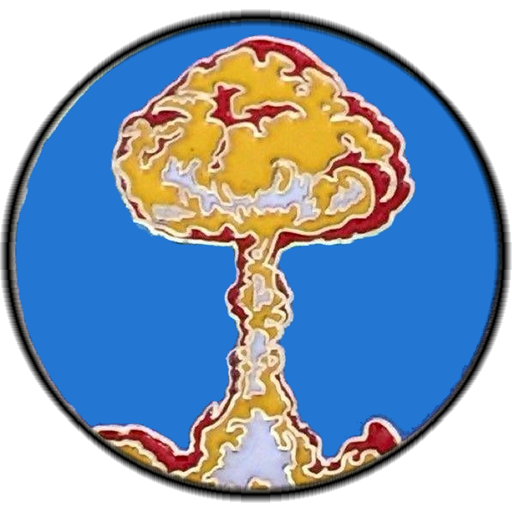Mk6
| Designer |
| ? |
| Type |
| Implosion |
| Dimension(s) |
| 128″ x 60″ |
| Weight(s) |
| ~8,550lbs |
| Yield(s) |
| ~8-160Kt |
| Application(s) |
| (BOMB) B6 Mod 0, 1, 2, 3 |
| Tests |
| Operation Greenhouse, shot Dog #12( 1951/04/07 )9.1 Proof test of the Mk6 at Enewetak Atoll. 81Kt10.1 |
The Mk6 was 60-inches in diameter not including the spoiler bands and 128-inches long, the same as the Mk4, weighing 8,550lbs.1.2
Equipped with a baro-fuze so the height of burst could be changed while airborne. Was stockpile from 1951 to 1962.7.1
Proof tested at the Nevada Test Site (Area 5) by airdrop from a B-50 in shot Encore of Operation Upshot-Knothole with a yield of 27Kt6.1
Due to size and weight constraints it was decided to use the Mk6 as a missile warhead design.2.1
In service from 1951-19618.1 with a nominal yield of 8-160Kt3.1 The Mk6 utilized the 130/240, 110/170/260, 150/260 capsule assemblies.5.1
Correcting in-flight insertion problems, Mk6 Mod 2 entered stockpile January 1952.1.1 The Mod 3 moved the antenna back to its original position on the nose plate, it entered stockpile June 2nd 1952.1.1
3 bombs were reportedly stored in igloos at Lakenheath Royal Air Force Station.4.1
Carried by the B-29, B-36, B-47, B-50, XB-52, AJ-1, A2J and A3D1.2



Mk6 being loaded into the forward bomb-bay of a B-50. (Retrieved from http://nuclear-weapons.info/images/Mk.6%20nuclear%20bomb-4.jpg) 

Mk6 being loaded into the forward bomb-bay of a B-50. (Retrieved from http://nuclear-weapons.info/images/Mk.6%20nuclear%20bomb-4.jpg)

- Sandia National Laboratory Information Research Division 3434. (1967). History of the Mk6 Bomb (Including the TX/XW-13, Mk18, and TX-20) (RS 3434/4). https://osf.io/46sfd/
- p.8
- p.13
- Sandia National Laboratory Information Research Division 3434. (1967). History of the Mk5 Warhead (RS 3434/3). https://osf.io/46sfd/
- p.16
- Norris, R. S., & Kristensen, H. M. (2016). Declassified US Nuclear Weapons at Sea During the Cold War. Bulletin of the Atomic Scientists, 2016.
- p.60
- Center for Defense Information. (1981). U.S. Department of Defense Nuclear Weapons Accidents 1950-1980 Introduction. The Defense Monitor. ISSN: 0195-6450.
- p.4
- Office of the Assistant to the Secretary of Defense. (1978). History of the Custody and Deployment of Nuclear Weapons: July 1945 through September 1977. https://nsarchive2.gwu.edu//news/19991020/04-01.htm
- p.336
- Norris, R. S., & Cochran, T. B. (1994). United States Nuclear Tests July 1945 to 31 December 1992 (NWD 94-1). https://fas.org/nuke/cochran/nuc_02019401a_121.pdf
- p.24
- Shelton, F. H. (1988). Reflections of a Nuclear Weaponeer. http://www.worldcat.org/oclc/35454336
- p.5-10(278)
- Polmar, N., & Norris, R. S. (2009). The US Nuclear Arsenal: A History of Weapons and Delivery Systems Since 1945. http://www.worldcat.org/oclc/690381240
- p.41
- National Association of Atomic Veterans. (2010). NAAV Newsletter—2010/11. https://www.naav.com/assets/2010_11_NAAV_Newsletter.pdf
- p.4
- Nevada Field Office. (2015). United States Nuclear Tests July 1945 through September 1992 (DOE/NV–209-REV 16; p. 129). National Nuclear Security Administration. https://www.osti.gov/servlets/purl/1351809
- p.29 (PDF Page)







